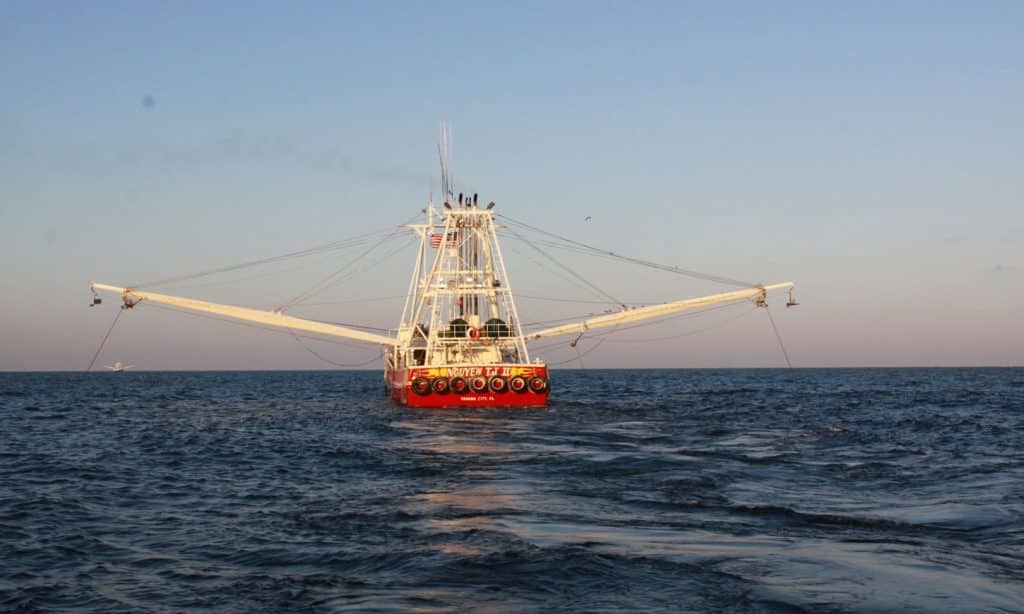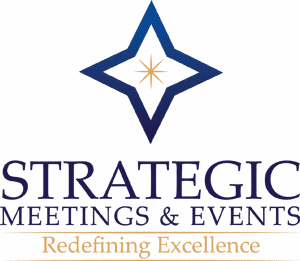Beware The Shrimp Boat and Look For The Wow – Event Design Guidelines
By Christy Lamagna, CMP, CMM, CTSM, and James S. Rota
Have you heard people say they’re a right-brain or left-brain thinker? Right-brained thinkers tend to be creative and instinctual, left-brainers more analytical and logical. That’s how “Beauty and the Brains,” from the minds of Christy Lamagna and James Rota, was born. James’ creativity and vision mesh with Christy’s logistics focus and strategic thinking to bring a well-rounded approach to their events. These columns are designed to highlight both sides of the planning process and how to look for the wow.
From the Beauty
Nothing compares to listening to guests’ reactions as they enter a well-designed room. Hearing their delight is a magical experience and an educational one. We form opinions based on our innate sense of balance. When that balance is perfect, it’s magic. When it’s not, you get that feeling you get when you can’t get comfortable in a room but don’t know why.
I remember the first gala I designed, “An Evening on the Bayou,” like it was yesterday. I was so excited to find a prop company that had a life-size shrimp boat. I thought it would be a great design element. From there I pulled together nets, dock posts, buoys and other assorted props. I even decided to soundscape the room for authenticity! I was off to a great start and looking forward to seeing it all pull together.
 Event day arrived. The boat was brought in piece by piece and assembled. I placed it in the center of the room with tables around it so everyone would have a great view. The food was on one side of the room and the dance floor on the other. I was sure people would be talking about this event for a long time to come.
Event day arrived. The boat was brought in piece by piece and assembled. I placed it in the center of the room with tables around it so everyone would have a great view. The food was on one side of the room and the dance floor on the other. I was sure people would be talking about this event for a long time to come.
Four hours later as the last piece of the boat was being screwed into place, my client walked in and exclaimed, “You need to move that boat. My guests won’t be able to see each other or what’s happening on the dance floor!”
I then had to inform the crew that they had to disassemble and move the boat and rearrange the tables and dance floor. I learned the hard way about balance, form and function, scale, interest and unity; the guidelines to good design.
Begin with balance
So how is good design achieved? Let’s begin with balance. Balance is the most important guideline in design. When creating a room layout, always consider the weight of each component you’re using. The overall concept must be well-balanced. A lopsided room will leave guests feeling uneasy. Ask yourself: What overall form and function will the room serve? If it’s for a general session, the sight lines matter. If it’s for a dance party, the dance space is most important. For a gala dinner, focus on the dining experience. Then balance the room to meet those goals. Creating a room layout will help you see the big picture. I wish I had realized that before building the boat that almost had me sunk!
Scale is next. Consider the size and ceiling height of the room. You need to fill the negative space in a room with a high ceiling, or your design will not be to scale. Remember that if one design component becomes too big or small, it will throw the entire room off.
Interest is what keeps energy flowing in a room. A visually appealing room is filled with many components that let guests discover new things as they walk further into the space. We have all walked into a gala where our first impression may have been “wow!” but it only took a few moments before our eyes became far less stimulated in a sea of same-colored linens and cookie-cutter centerpieces. If instead, you use three different floral centerpieces (with the same coloration and components to unify them), think of how much more interesting the room would be.
And finally, unity. Design concepts need to be unified to create a cohesive message, to keep the room interesting, and have it make sense. If we had changed from one centerpiece in the last example and created three different centerpieces using different colors and shapes, the room would lack unity. A good rule of thumb in creating unity is to use each concept in the room three times. This also helps keep the balance and scale correct. Funny isn’t it? To create balance many think of using things in pairs but when pulling together a room to create interest, we do so in odd numbers such as three and five. If you are creating a lounge and the furniture has chrome legs and hardware, add chrome to the design concept by using chrome to contain the florals or as lamps or votive bases.
As you practice these guidelines, your inner design guide will strengthen and it will become second nature. Like most things in life, it’s a matter of practice.
From the Brain
Now let’s touch on the logistics behind the scenes. When James tells me his design plan, I spring into action as well. I have to make sure I schedule food for the crew during long setups, a place for them to eat as well as store their things, a standing cold beverage service, adequate time for load-in and load-out, and make sure the hotel is on board and aware of my plans and needs every step of the way.
Before anyone orders anything, I have to make sure that both the production and the design elements will fit into the freight elevator, make it around any turns in a hallway, bends in a staircase and that they will fit through the doors from a height and width perspective. I also need to make sure we have adequate setup and tear down time; if the design is too intricate, it may exceed the number of hours for which we have space.
When James’ deliveries are scheduled to arrive, I make sure the loading dock isn’t scheduled to receive another shipment, or that another group isn’t moving in somewhere else in the building and using the freight elevator. During load-out, I need to make sure the loading dock will still be open and if not, arrange to have someone open it and let our freight leave the building. If we cannot get a vendor to do a pickup after hours, I have to arrange for the props/materials to be stored overnight and schedule the pickup for the next day. Sometimes that means hiring security overnight, so I need to know where the props will be stored. If it’s in the lower level of the building near the loading dock, I have to find out if it’s temperature controlled because I can’t have security sitting overnight in a loading area without heat or air conditioning.
If James’ décor requires lighting, I need to coordinate my production company’s load-in with James’ needs so his lights are hung or hooks are in place for décor that is to be hung later in the week. This takes careful orchestration on everyone’s part and cannot be an afterthought. (Well it can be, but it’s a very challenging and expensive solution to have to rehang rigging once it’s in place.)
So while my logistics may not be as pretty or as glamorous, they are integral to the process. Sometimes James has to scale back on an idea if it can’t work logistically. Sometimes I have to stretch to make something work because the design element is essential to the event’s success. So, just as balance is crucial to creating décor, it’s also essential to making the design happen.
Tags: Beware The Shrimp Boat and Look For The Wow, Wow, Success, Strategic Events, Strategic Planners, Corporate Meetings, Corporate Events, Strategic Events, Plan Your Meetings





